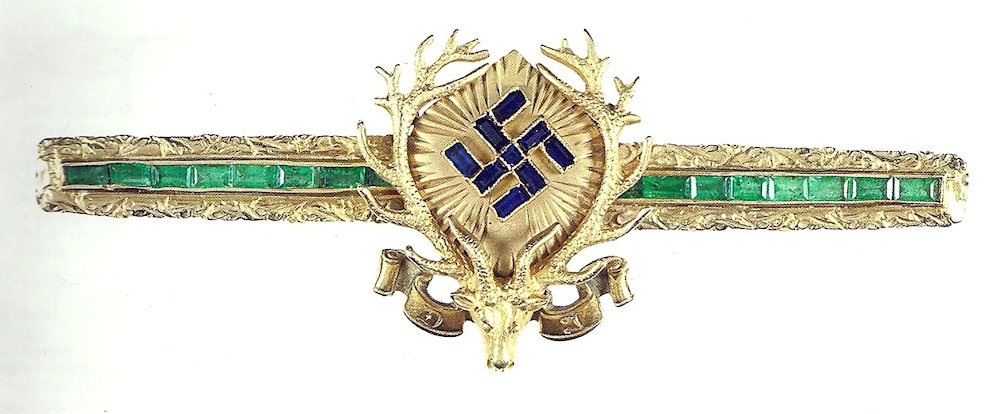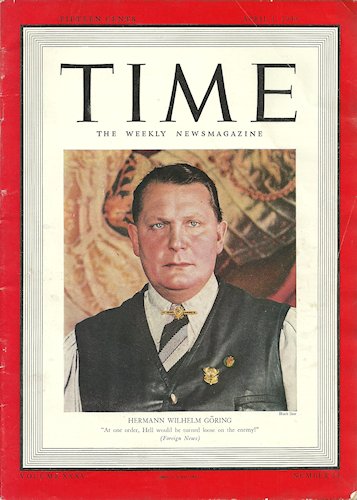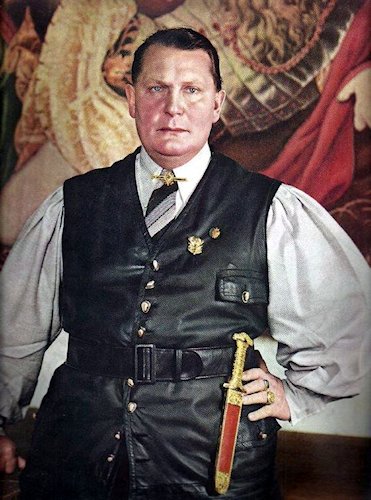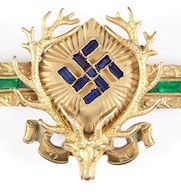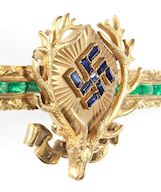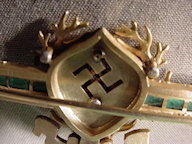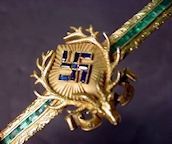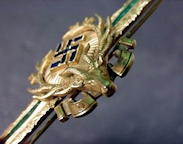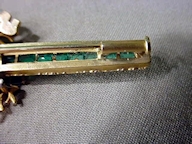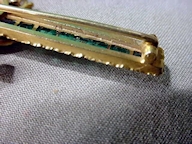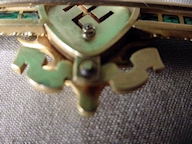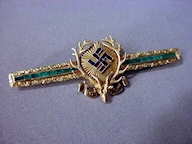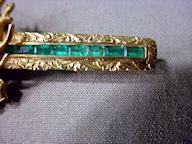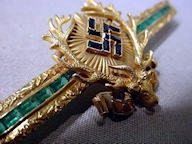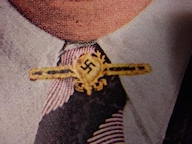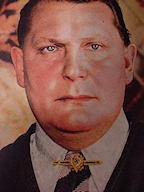|
|
|
|
Special Entry
Hermann Göring's Collar Pin as Seen on Prewar Publications
|
|||||||||||||||||
|
Hermann Göring’s Gold and Jeweled Reichsjägermeister Collar Pin as Seen in Important Prewar Publications Stupendous!!!! |
|||||||||||||||||
| DESCRIPTION: Of the top 20 fabulous relics that have been owned by us in the course of over 40 years, this is possibly the apex! Words can hardly describe the beauty or the maximal consummate historical importance that can be characterized here. This is to us breathtaking! Hermann Göring, the hunting enthusiast personified, was elated in 1934 when Adolf Hitler bestowed upon him the job and title of Reichsjägermeister having authority over all hunting and forest preservation. His edicts and game laws were a model for those still in force throughout Europe, today. Among the many duties that this barrel of energy took on, this one was by far his favorite office because it afforded him some time for relaxation at his hunting lodges in east Prussia Carinhall and Rominten. He hunted along with ambassadors, kings, princes, and the power brokers of the world, among others. The German people loved him and called him ‘Unser Hermann’ (“Our Hermann”). We have always been very passionate about accumulating Göring treasures, and have had quite a few over the years as we were lucky enough to make some important contacts in Veldenstein, the 16th century castle owned by Hermann Göring. I cover all of this elsewhere in the Göring section of the Germania site. The Collar Pin This famous collar pin was obviously a favorite jewelry piece that was numbered in Göring’s vast collection of jewelry. He wore it when pictured on the cover of the 1940 issue of Time magazine and he also wore the same Jäger outfit and sported this collar pin earlier in a full-color, full-page picture in the pages of Life magazine’s edition of September 11, 1939. Both magazines, of course, were the most prestigious news magazines of the prewar era. The collar pin had been in the collection of Mr. William Blynn, a prestigious collector of Third Reich items, who had some of the very finest and rarest articles ever accumulated from the highest-ranking N.S. personalities. Among these article include the Coburg stained-glass window from the estate of Gauleiter Fritz Wachtler, NSDAP 18-45; the Alfred Rosenberg Mein Kampf, AH 28-1; Napoleon’s sword, Göring’s automobile pennant, GOR 11-10 ; and a jeweled and brilliantly exotic ring presented to Adolf Hitler—which he never wore--and too many more fantastic things to be able to be mentioned here. But, of all the items Bill owned he considered the collar pin the greatest, the most beautiful, and certainly the most important piece of all! He had shown it to me twice since 1965 when he brought it to shows in Cincinnati, Ohio, and Monroeville, Pennsylvania. It was never for sale while he had it but he was very deservedly proud to possess it and now and then be able to show it to admirers who usually stood awestruck and totally fascinated by its obvious beauty, but also for its prodigious historical importance. After Bill passed on to his reward in Heaven or Walhalla, his collection was put up for auction in at least two auction houses and I was fortunate enough to buy several of the most important pieces, but this collar pin was certainly the greatest item of all of them. I paid dearly for it for sure but certainly it is by far one of the greatest relics I have ever owned or would even hope to own. And I do not at all apologize for the fact that I feel that it is a memento of a man whom I admire greatly, a brave man who was a lover of beauty and the finer things. His politics aside he truly was, as they say, a renaissance man, a latter-day Falstaff. Today, I share his enthusiasm for the collecting of fabulous historical treasures, as I am sure you do as well. The piece is well known to other dealers and collectors who knew Mr. Blynn and his marvelous collection, but no piece ever stood out as much as this one. Whoever ends up with it will be the owner of the most coveted N.S. relic ever found. Mr. Blynn never revealed the name of the American G.I. who brought it back and this was probably by agreement with the looter. I know many vets I have bought from insisted on anonymity. The item is in perfect condition throughout and has been carefully preserved and kept in a secure safety deposit box since purchased. The best way we can describe it is as an exquisite piece of jewelry crafted by a master jeweler for he, the second most important man in Europe in the 30’s and 40’s and paladin of Adolf Hitler. The pin could only be considered evocative of the dashing flamboyance of the Reichsjägermeister. We know it is one of a kind and although it is not signed we are very sure it is the work of Professor Herbert Zeitner, Göring’s favorite and practically personal goldsmith whose studio was in Berlin. No one else would have been considered to craft this piece of jewelry for the Master of the Hunt. Zeitner was considered the official Goldschmied of the Third Reich. The solid-gold pin measures 3 inches long and 1 1/8 inches wide at its widest point. It is dominated by the head of a golden stag at center its multipointed antlers encompassing a mobile swastika lying on a field of sunrays. The swastika is comprised of nine rectangular blue sapphires each bearing nine facets and carefully placed in settings bearing decorated angles with repeating squares. Riveted below the stags head is a small banner that looks to flow independently with the initials ‘D’ and ‘J’ engraved in gothic letters and darkened appearing on either side. This represents the word |
Contact Us
Please E-mail for any additional information you may need.
If you prefer, contact 'Germania' at PO Box 68, Lakemont, GA 30552
or call at 706.782.1668.
Please! do not call during the wee hours of the morning. The best time for calling us is between 10 am and 12 noon and between 9 and 11 pm eastern time.


